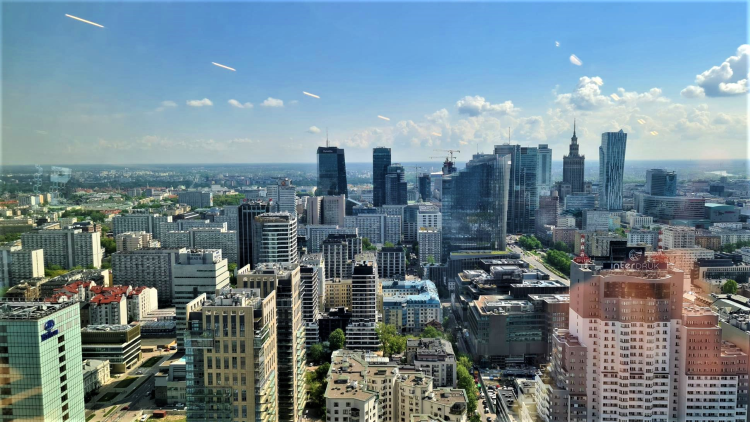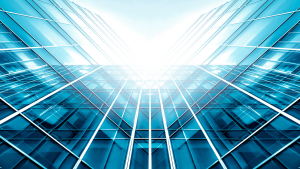
According to Walter Herz, office buildings that have solutions to limit the negative impact on the environment and reduce operating costs, at the same time provide a friendlier, safer and better organized work space. What do they offer?
The change in the way of thinking about the work environment that has taken place since last spring did not ultimately affect the status of offices. On the contrary, after several months of hibernation, offices experience a renaissance. They are still a strong support in building the organizational culture of companies and a base for the development and cooperation of teams, training new employees, and a meeting place with clients.
"However, the expectations of the users of office buildings have changed. In addition, issues concerning the way buildings affect the natural environment and the people working in them have come to the fore. - Decision-making processes aimed at environmental protection are gaining momentum, which more and more often carry specific declarations of investors and developers, in which they undertake to reduce carbon dioxide emissions by buildings to zero in a specific time perspective", says Bartłomiej Zagrodnik, Managing Partner/CEO of Walter Herz.
It became necessary to reevaluate the previously adopted standards and expand the scale of pro-ecological solutions, especially in the context of climate change, which brings unexpected and dangerous weather phenomena. "The development of the market is focused on the implementation of intelligent, environmentally neutral buildings and the creation of innovative solutions that support the decarbonisation of the existing resources and adapting them to the current requirements in the field of sustainable development", explains Bartłomiej Zagrodnik.
"The changes are also stimulated by such factors as rising electricity prices, costs of water consumption, heating and waste disposal. Office buildings are switching to green energy derived only from renewable sources, which not only has positive environmental effects, but also reduces operating costs. Hence, we also see the growing interest of tenants in real estate equipped with environmentally friendly solutions", says Bartłomiej Zagrodnik.
Green energy and water saving
Most modern buildings not only draw energy from renewable sources but also use technologies that reduce their consumption by automating space management. There are also more and more common solutions enabling water retention, which is of key importance in the face of the water crisis. Facility owners are serious about the problem of shrinking water resources. They invest in grey water filtering and reuse systems and rainwater management, fittings and showers based on motion sensors to reduce network water consumption, as well as various types of water retention solutions. They create green roofs, terraces and rain gardens. Companies are also more likely to choose buildings that meet certain standards in this area, in order to take advantage of the possibility of reducing costs.
In Poland, proper management of water resources is particularly important because, in terms of our resources, we are in one of the last places in Europe, ahead of the Czech Republic, Cyprus and Malta. Unfortunately, the level of water consumption in the world is constantly increasing. Over the last century, it has increased sixfold.
Crystal clear air, green enclaves and ecological crops
There are many more factors that influence the efficiency of office buildings. There are, among others, ventilation and air circulation systems that control and supply air of better quality than specified in the standards in high-class facilities, specialized filters and humidifiers, as well as carbon-free finishing materials and solutions optimizing acoustics.
Modern buildings expand the spectrum of solutions to become more work-friendly and environmentally friendly. Here, green also plays one of the main roles. We observe the creation of green enclaves around the buildings, the arrangement of courtyards, squares and recreation areas immersed in greenery, also with green concrete pavements that purify the air. Vegetation is usually selected in terms of low water demand and the possibility of producing a large amount of oxygen and absorbing toxins, and vines in the context of protecting the walls of the building from heating up. The complexes include refuges for birds and insects, as well as city apiaries and gardens for organic farming.
Specially designed blocks, facades and roofs of buildings with elements reflecting sunlight are used to reduce the effect of the so-called urban heat islands. The interiors of office buildings are arranged in such a way as to activate users. For example, the central location of the stairs is to encourage the movement of pedestrians between the floors, which reduces the use of elevators. The promotion of infrastructure for cyclists in the office buildings is also conducive to the pro-health activity of employees and reducing the burden on the environment.
Technologies that facilitate work organization
The well-being of employees, so widely discussed today, is supported by the use of hybrid office management platforms in the most modern buildings, thanks to which the facilities can offer the so-called smart office. Applications available on smartphones improve the daily work organization. With their use, one can, among others, book an office arrival time or a parking space, enter the garage and take a lift to the selected floor avoiding contact with the other office users, book a conference room for a team or client meeting, and even report a printer issue.
The key challenge was to provide people in the office environment with the greatest possible comfort and safety. It is to be guaranteed not only by generally available basic disinfectants, masks and gloves but also by changes in the arrangement of offices. Such arrangement of office spaces, so that they are comfortable for everyone and provide various types of zones adapted to the new work profile. Therefore, companies most often decide to increase the distance between workstations, limit the number of large conference rooms that replace dedicated smaller rooms, boxes and booths for talks, as well as stands for creative teamwork. There are social zones, chill-out rooms to rest, green terraces and winter gardens.
The ambition of the office environment is also to create ecological spaces. Use as many recycled or reusable office supplies as possible, such as filter bottles instead of disposable plastic packaging. Undoubtedly, the reduction of the carbon footprint is also facilitated by the popularization of videoconferences, which significantly reduced business trips. Just as the already sanctioned electronic document flow previously contributed to minimizing the use of paper.
Good service in the buildings is also increasingly important. The offer of additional services, similar to those provided by hotels, for example, concierge service, is gaining in importance. The key condition is also direct access to the gastronomic offer, basic services and shops, preferably on the premises of the building. The changes taking place in the office market are generally aimed at perceiving space as a service.



